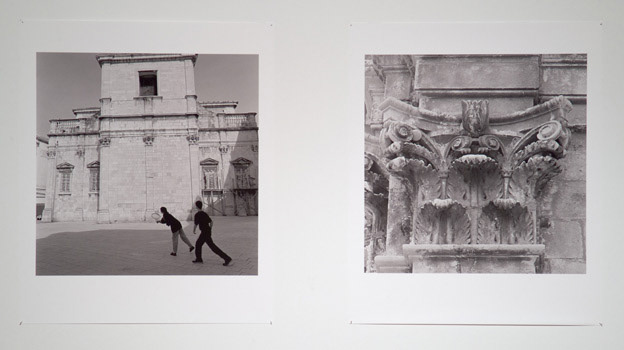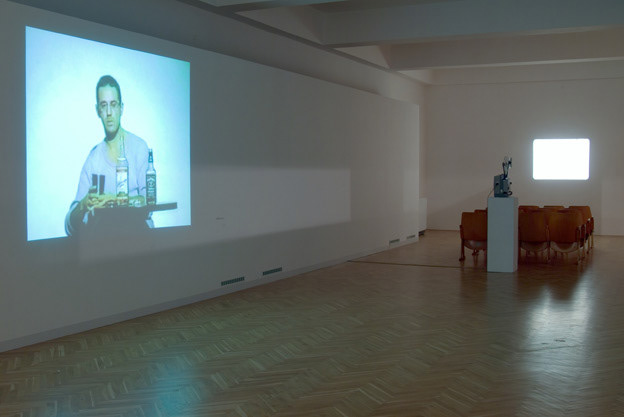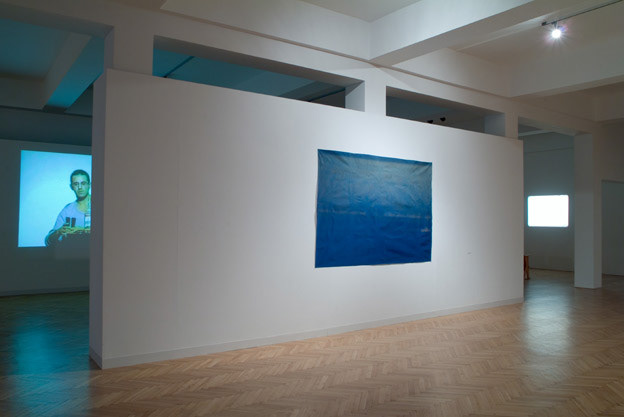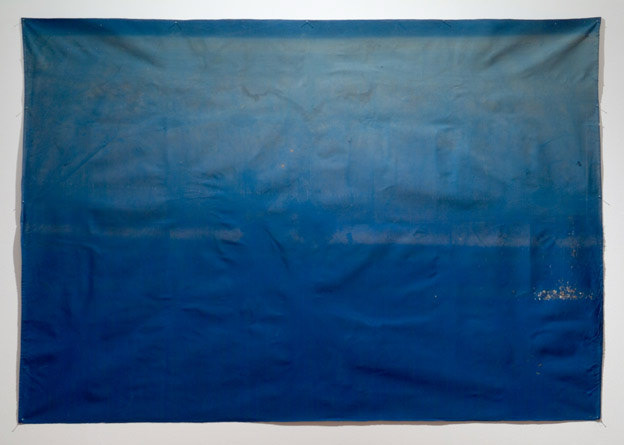SLAVEN TOLJ - UNTITLED RETROSPECTIVE...
Trvání výstavy: 26. 4. —19. 6. 2007
Kurátor: Michal Koleček
Vystavující: Slaven Tolj
—
The retrospective exhibition of the Croatian artist Slaven Tolj in Emil Filla Gallery in Ústí nad Labem is another contribution to the survey of posttotalitarian art of Central and Southeast Europe that has been characteristic for this exhibition institution for over ten years. And for exactly the same period of time, Emil Filla Gallery has been cooperating with Slaven Tolj who has already presented his work in Ústí nad Labem (but also in Prague or Brno) for several times, within group or minor individual exhibitions. Therefore, with a certain portion of hyperbole, we can say that with this project, Emil Filla Gallery returns to the roots of its programme orientation to see them from an institutionally higher perspective given by the new organizational structure as well as the spatial possibilities, and at the same time, to compare them with the development of the presented artist who meanwhile has become one of the most important representatives of Balkan artistic scene.
Slaven Tolj was born in 1964 in Dubrovnik and he has remained faithful to this town with unique genius loci to date. From 1982 to 1987, Tolj studied at the Academy of Fine Arts in Sarajevo (Graphic Studio), after he graduated however, he returned to his native town to develop his creative and curatorship activities. Slaven Tolj's artistic beginnings were with no doubt strongly influenced by the experience of war events connected with the decomposition of former Yugoslavia. A number of significant artworks that in fact formed Tolj's specific expressional strategy were created in relation to the military blockade of Dubrovnik by the Yugoslavian army from 1992 to 1993. This strategy is based on consistent application of late-modernistic expressional principles, such as dematerialization of the artefact, performative procedures, site-specific models, as well as various modifications of Duchamp-style ready-mades. In this sense, Tolj follows the relatively liberal atmosphere of Yugoslavian art of 1970's and early 1980's. However, the author rigorously confronts this late-modernistic manual with socially outspoken themes. His ability to manipulate with the connotation of visual symbols, that is a sort of permanent intercontextual denotational transfer, is an important element in this Tolj-style crossing of paradigms
Tolj's crucial artworks connected with his artistic beginnings include for instance the photographic project called INTERRUPTED GAME (1993). A black-and-white photograph shows a detail of a volute on a cathedral in the historical centre of Dubrovnik with a tennis ball stuck in it. In the peace times, the children used the wall to rebound the ball to practice playing tennis; however, during the siege of the town, this open space became a frequent target of snipers' attacks, so the game has to be interrupted for a long time. In a way, Tolj completed his reflection of the war events in Dubrovnik by means of his installation for the exhibition Documenta X in Kassel in 1997 when he placed two inconspicuous lamps high under the dome of the Kassel railway station. During bombarding Dubrovnik, these lamps were used to replace baroque lamps in the Jesuit St. Ignatius Church, which had been put in a safety depositary. After the end of the war, the spare lights became redundant and the author used them for the Kassel installation. In this furtive, almost indistinct way, Slaven Tolj presented traces of the war events in the middle of the "western world" (as part of a prestigious review) to draw attention to the fact that great conflicts are often adumbrated and represented by hardly distinguishable processes and symbols.
In the course of time however, Slaven Tolj was extending the discourse of his creation, which naturally incorporated key topics connected with the political and social transformation, as well as with the radical incursion of globalization tendencies into the rigid posttotalitarian milieu. Besides the site-specific installations or pseudo-documentary photographs, the author also started to use the medium of performance, and at the same time, video-documentation resulting from it. In 2001, he created a work called GLOBALISATION in this way, in which he simply recorded the course of his own performance presented in Exit Gallery in New York as part of an action art festival Body and the East. In this performance, Tolj slowly, as he was in contemplation, blended and drank up a bottle of American whiskey and a bottle of Russian vodka. The essence of this artwork though, consists only in the reaction of the festival organizers who got drunk Tolj in hospital, cancelled the following programme and emptied the club. The multicultural openness and political correctness of the West were fully confronted with the reality and mentality of the East. In one of his latest works - an installation called UNTITLED from 2005 - Slaven Tolj stepped even further in generalization of social processes and created a sort of social haiku representing the disillusion of the 1980's generation in the situation of the posttotalitarian transformation. In this installation, the author exhibited a revolving ball that is used in discos, but devoid of the glass panes enabling the captivating reflection of light rays. The illusion of joy and endless entertainment was suddenly lost forever leaving only the bitter and killing reality of life in the altered political and social conditions of the "new society".
Besides his own artistic production, Slaven Tolj has always been involved in organizational and curatorship activities. As early as in 1988, he founded Art Workshop Lazareti in Dubrovnik - a key institution for development of local contemporary art. A number of important foreign exhibitions have been organized here, oxygenating the artistic atmosphere of the town, but at the same time, this platform has been serving as production background for young Dubrovnik artists. Step by step, Art Workshop Lazareti has ranked among the most active Croatian centres of contemporary art, and today, in addition to gallery activities, it also carries out a residence programme or theatre, music and film performances. Meanwhile, Tolj himself has achieved a reputation in the context of contemporary European art, which has been convincingly proved by his participation in many important exhibitions of European, especially posttotalitarian art. Among them, we can for instance mention
Documenta Kassel (1997), the festival of East European action creation Body and the East (Museum of Modern Art Ljubljana, 1998), the key exhibition of contemporary East European art After the Wall (Museum of Modern Art Stockholm, 1999), his presence in the prestigious collection of contemporary East European art 2000+ Art East Collection (Museum of Modern Art Ljubljana, 2000) or Venice Biennale (curatorship concept for the Croatian pavilion in 2005).
It is evident that Slaven Tolj's exhibition in Emil Filla Gallery gives the audience in Ústí nad Labem a chance to meet one of the essential figures of East European posttotalitarian art. Slaven Tolj is a reputable author, curator, and organizer of artistic activities, and not least, an artist who has been in a long-term contact with the Ústí scene, who has undoubtedly influenced it and repeatedly contributed to its presentation in the Croatian (and especially Dubrovnik) environment.
Michal Koleček
























